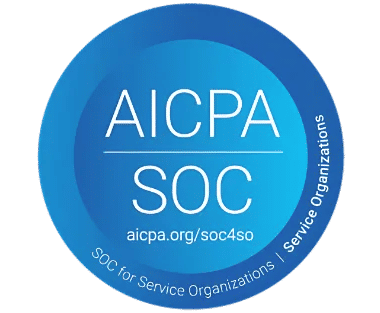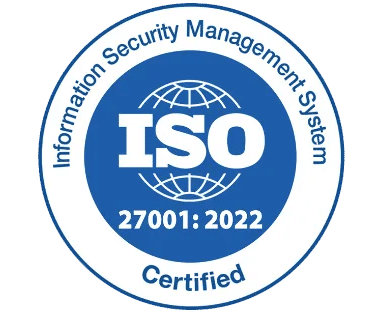How Employee Performance Management System Improve Workplace Efficiency

Starting a new job can be both exciting and overwhelming. A structured employee onboarding application ensures that new hires feel welcomed, engaged, and ready to contribute.
A well-designed onboarding program improves retention rates, productivity, and job satisfaction. This guide provides a comprehensive overview of how to create an effective employee onboarding application, ensuring a smooth transition for new employees.
What Is an Employee Performance Management System?
An employee onboarding application is a structured process that helps new employees integrate into a company. It includes orientation, training, and mentoring to ensure they understand their roles and company culture. The process begins before the employee’s first day and continues for several months to ensure a smooth transition.
Key Objectives of Employee Performance Management System:
- Align Employee Goals with Organizational Objectives: Staff Performance Management System ensures that each employee’s goals are aligned with the broader organizational mission, ensuring everyone is working toward the same goals.
- Identify Strengths and Weaknesses: A comprehensive system helps managers identify employees’ strengths, as well as areas where they may need further development.
- Enhance Communication Between Employees and Managers: EPMS fosters open, ongoing communication between managers and employees, creating an environment of transparency.
- Improve Overall Workplace Productivity: By focusing on continuous development, regular feedback, and measurable objectives, employee evaluation system helps employees work more efficiently and effectively.
The Impact of EPMS on Workplace Efficiency, Employee Satisfaction, and Organizational Growth.
An EPMS is not just about tracking performance; it has a direct impact on operational efficiency in the workplace:
- Optimizes Resource Allocation: By using data to identify high-performing employees and those who need additional support, organizations can allocate resources more effectively. For example, top performers might be assigned to critical projects, while employees needing additional training can receive targeted development.
- Reduces Turnover Rates: A well-implemented EPMS makes employees feel valued and supported. Regular feedback, opportunities for growth, and recognition reduce frustration and improve job satisfaction, leading to lower turnover rates.
- Automates Manual HR Tasks: Modern EPMS solutions often come with automation features that streamline administrative tasks such as scheduling performance reviews, tracking goals, and generating reports. This frees up HR professionals to focus on strategic initiatives, rather than spending time on manual processes.
- Encourages Accountability: When employees know that their performance is being tracked and evaluated, they are more likely to take ownership of their work. The clarity provided by an EPMS ensures that everyone is held accountable for their results.
- Improves Decision-Making: Data-driven insights from the EPMS allow managers to make informed decisions about promotions, resource allocation, and employee development. These insights are essential for optimizing team performance and achieving business goals.
- Strengthens Organizational Culture: An EPMS fosters a culture of continuous improvement. Regular feedback and performance evaluations create an environment where employees are encouraged to grow, collaborate, and contribute meaningfully to the organization’s success.
Benefits of Implementing an Employee Performance Management System
A well-implemented EPMS can provide several key benefits that can improve workplace efficiency, engagement, and overall performance:
- Boosts Employee Productivity: When employees have clear and specific goals, and they receive regular feedback on their performance, they understand exactly what is expected of them. This structured approach to performance management allows employees to focus their efforts on areas that matter most, improving their overall productivity.
- Enhances Communication and Collaboration: Employee Performance Management System promotes an open line of communication between employees and managers. Regular feedback sessions, as well as peer reviews, help employees understand how they are performing in real-time, encouraging constant improvements. Moreover, clear expectations and consistent feedback can reduce misunderstandings and improve collaboration between teams.
- Encourages Employee Development: One of the primary functions of an EPMS is to track individual employee progress over time. This tracking helps organizations identify skill gaps and areas where employees need further training or development. By providing employees with the necessary tools, training, and learning opportunities, businesses can nurture their growth and enhance their long-term value to the organization.
- Reduces Workplace Conflicts: With clear performance expectations and transparent feedback, employees are less likely to feel unfairly treated or confused about their standing in the organization. This reduces misunderstandings and can prevent workplace conflicts over performance evaluations.
- Streamlines Performance Reviews: Traditional performance reviews can be time-consuming, subjective, and often disconnected from real-time performance data. An EPMS, especially one that is automated, allows for objective and data-driven performance assessments, making the review process more accurate and less biased.
- Increases Employee Engagement: Employees who regularly receive constructive feedback and recognition for their hard work are more engaged in their roles. Staff Performance Management System ensures that employees are regularly praised for their achievements and guided to improve in areas where they may be lacking. This recognition fosters a sense of accomplishment and motivates employees to perform at their best.
- Aligns Goals with Business Objectives: One of the key features of an EPMS is the ability to link individual and team goals with the broader organizational goals. This alignment ensures that all efforts are directed toward achieving the company’s strategic objectives. When employees can see how their work directly contributes to the company’s success, they are more likely to remain motivated and focused.
- Provides Data-Driven Insights: EPMS systems gather a wealth of data on employee performance. This data is invaluable for decision-making, as it provides managers with actionable insights into team dynamics, productivity trends, and potential areas for improvement. These insights can be used to optimize workforce strategies, allocate resources effectively, and predict future performance outcomes.
Components of an Effective Employee Performance Management System
An effective EPMS should include several key components to ensure it functions optimally. These components include:
- Goal Setting and Performance Planning: Setting clear and measurable goals is essential for driving performance. Using the SMART framework (Specific, Measurable, Achievable, Relevant, and Time-bound) helps ensure that goals are clear, realistic, and aligned with business objectives.
- Continuous Monitoring and Feedback: EPMS allows for continuous tracking of employee performance. This ensures that employees are always aware of their progress and can adjust in real-time to stay on track.
- Performance Appraisals: Annual or bi-annual performance reviews provide a comprehensive assessment of an employee’s performance. These reviews should be data-driven and provide employees with feedback on areas where they excel and areas where they can improve.
- Employee Development Programs: A good Staff Performance Management System includes learning and development opportunities that are tailored to the needs of individual employees. Whether through workshops, mentoring, or online courses, these programs help employees acquire new skills that are beneficial to both their personal growth and the organization.
- Recognition and Rewards: Recognizing and rewarding employees for their hard work is a critical component of any EPMS. Whether through bonuses, promotions, or non-monetary rewards, acknowledging employee achievements boosts morale and motivates employees to continue performing at a high level.
- Performance Improvement Plans (PIPs): For employees who are struggling to meet expectations, a Performance Improvement Plan (PIP) can be used to outline specific steps to help them improve. PIPs provide a structured approach to support employees in overcoming challenges and enhancing their performance.
- 360-Degree Feedback System: A 360-degree feedback system collects input from not only managers but also peers, subordinates, and sometimes even customers. This holistic feedback provides a well-rounded view of an employee’s strengths and weaknesses, ensuring more accurate and balanced performance evaluations.
Challenges in Implementing an Employee Performance Management System
While EPMS offers numerous advantages, organizations may face several challenges during the implementation phase:–
- Resistance to Change: Employees and managers may resist the transition to a new system, especially if they are used to traditional performance management methods. This resistance can be mitigated by clearly communicating the benefits of the system and involving employees in the process.
- Lack of Proper Training: For an EPMS to be successful, it is essential that both employees and managers understand how to use the system effectively. Providing adequate training and support is critical to ensure the system’s success.
- Inconsistent Feedback and Communication: Without consistent feedback, an EPMS can lose its effectiveness. Organizations must ensure that feedback is regular, specific, and constructive to help employees improve their performance.
- Data Security Concerns: Many EPMS solutions are cloud-based, which can raise concerns about the security and privacy of employee data. Organizations must ensure that their EPMS provider uses robust security measures to protect sensitive information.
Best Practices for a Successful EPMS Implementation
To maximize the benefits of an EPMS, businesses should follow these best practices:
- Set Clear Objectives: Define the purpose of the EPMS, such as improving productivity, enhancing employee development, or aligning individual performance with business goals.
- Customize to Business Needs: Tailor the system to meet the specific needs of your organization, considering your industry, company culture, and key performance indicators (KPIs).
- Promote Transparency: Clearly communicate the goals, expectations, and benefits of the EPMS to employees. Transparency helps build trust and encourages buy-in from the entire workforce.
- Leverage Analytics and Reporting: Use the data collected by the system to make informed decisions, identify trends, and optimize workforce performance.
- Foster Collaboration: Encourage teamwork and peer feedback by including collaborative features such as 360-degree reviews and team-based goal setting.
Conclusion
An Employee Performance Management System is a vital tool for improving workplace efficiency, enhancing communication, and driving employee growth. By setting clear goals, providing ongoing feedback, and focusing on development, EPMS helps create a more productive, engaged, and high-performing workforce.
Frequently Asked Questions
1. What is an Employee Performance Management System, and why is it important?
Employee Performance Management System helps organizations track, evaluate, and improve employee performance. It aligns individual goals with business objectives, enhances feedback, and boosts productivity, leading to better engagement and reduced turnover.
2. How does a Staff Performance Management System help in goal alignment?
A Staff Performance Management System ensures employee goals align with company objectives through clear targets, progress tracking, and feedback, improving accountability and productivity.
3. How does an Employee Evaluation System improve productivity?
Employee Evaluation System identifies strengths and areas for improvement, allowing managers to offer targeted training and feedback, enhancing efficiency and performance.
4. How can an employee evaluation system reduce workplace conflicts?
Employee evaluation system ensures transparency, clear expectations, and data-driven evaluations, reducing misunderstandings and workplace conflicts.
5. What challenges come with implementing a Staff Performance Management System?
Challenges include resistance to change, lack of training, inconsistent feedback, and data security concerns. Proper training, communication, and security measures help overcome these issues.










_svxLrd-8yH.png)

_2VYSFUTN5m.png)

_JiluXJRGNl.svg)

_2djTKNocf.png)





_Rapo0hRMBy.png)










